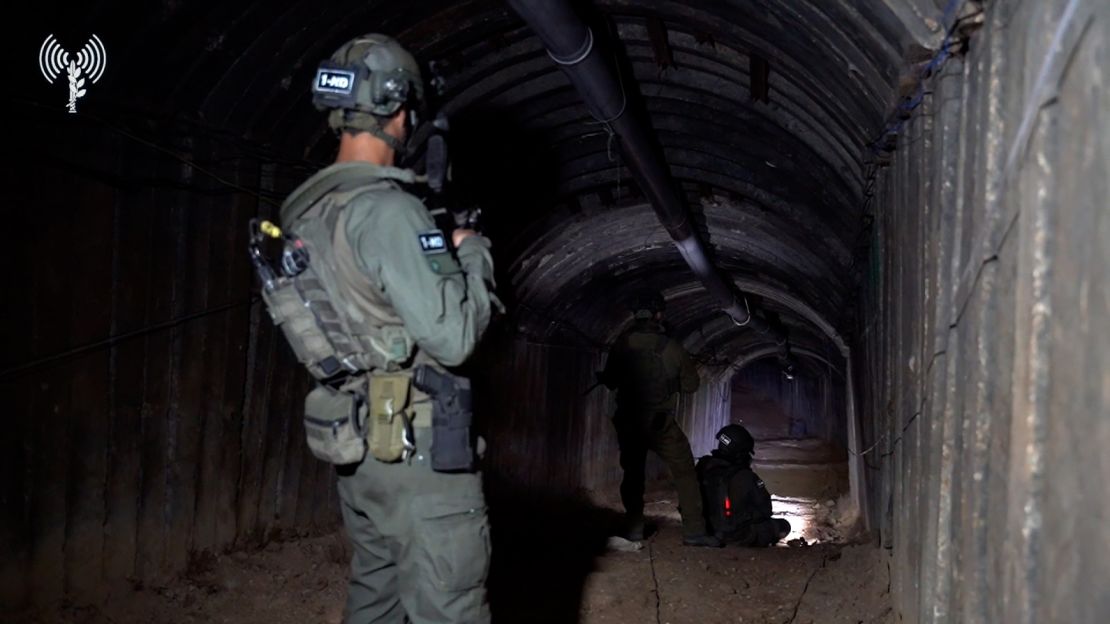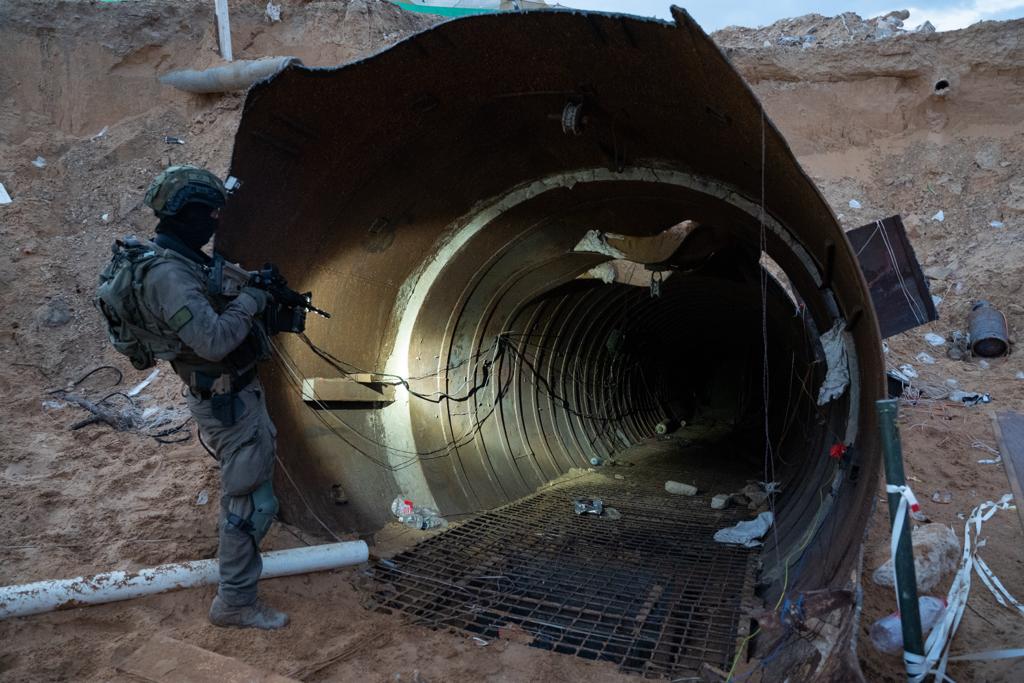Israel Unveils Massive Hamas Tunnel
In a bid to showcase the extent of the challenges faced in combating Hamas, Israel unveils massive Hamas tunnel discovered so far.
Author:Tyreece BauerReviewer:Elisa MuellerDec 19, 202386.8K Shares1.1M Views

In a bid to showcase the extent of the challenges faced in combating Hamas, Israel unveils massive Hamas tunneldiscovered so far.
The Israeli military guided international journalists, including two from The New York Times, on a tour of what is deemed the largest Hamas tunnel.
This underground passage, located in the northern Gaza Strip, is wide enough to accommodate a large vehicle, reinforced with concrete, and equipped with electrical wiring.
The Largest Hamas Tunnel
On Sunday, the Israel Defense Forces (IDF) officially revealed the "biggest Hamas tunnel" in Gaza, spanning four kilometers and capable of accommodating large vehicles.
Equipped with electricity, ventilation, and communication systems, the tunnel is part of Hamas's "strategic infrastructure" and is slated for destruction.
The IDF claims to have exposed hundreds of terror tunnel shafts throughout Gaza, emphasizing ongoing efforts to locate and destroy attack tunnel routes.
As the conflict persists, the underground labyrinth remains a critical aspect of the ongoing struggle between Israel and Hamas.

Tunnel As A Symbol Of Diverted Resources
Israeli military officials assert that the tunnel's size and complexity underscore the formidable task they confront in eradicating the network of tunnels that Hamas has established throughout Gaza.
These tunnels enable the militant group to evade and launch attacks on Israeli forces, presenting a significant challenge for Israel's military strategy.
Rear Adm. Daniel Hagari, the chief spokesman for the Israeli military, emphasized that the tunnel's existence highlights Hamas's diversion of resources meant for civilian use.
The construction, spanning years and involving millions of dollars, cement, and electricity, stands as a testament to the prioritization of military infrastructure over essential civilian needs.
During the guided tour, journalists were allowed only a limited view of the extensive tunnel system, hinting at its potentially vast network.
Israeli military officials revealed that recent intelligence suggests a gross underestimation of the tunnel system's size, now believed to be closer to 250 miles, significantly exceeding the initial estimate of 60 miles.
War Intensifies Amid Global Pressure
As Israel faces mounting pressure to conclude the intense phase of the conflict, with nearly 20,000 reported Palestinian casualties, the Biden administration envisions a transition to more precise, intelligence-driven missions.
These missions would focus on eliminating Hamas leaders and rescuing hostages, shifting away from large-scale ground and air campaigns.
In response to international criticism over civilian casualties, Israeli military engineers have experimented with pumping seawater into northern Gaza tunnels to flush out fighters.
Additionally, the military released a video of the tunnel's construction that it had discovered during a raid on Hamas offices. The video surprised Israeli leaders by revealing that Hamas had access to equipment previously believed to belong only to Hezbollah.
The underground passageways have become a focal point in the information war surrounding Gaza. The military released a video showing a top Hamas leader's brother driving through the tunnel, emphasizing its strategic importance.
Meanwhile, Israel continues its efforts to counter Hamas's claims and justify military actions, including the recent flooding of some tunnels with seawater.
Final Words
The unveiling of the largest Hamas tunnel in Gaza provides a stark illustration of the ongoing challenges in the conflict between Israel and Hamas.
The guided tour, revealing the tunnel's size and complexity, underscores the intricate network that Hamas has built beneath the densely populated Gaza Strip.
As the conflict intensifies and global pressure mounts, Israel faces the dual task of dismantling these tunnels while navigating the delicate balance between military objectives and minimizing civilian casualties.
The revelations about the tunnel's construction, the surprising capabilities of Hamas, and alternative tactics employed by the Israeli military underscore the evolving nature of the conflict, both in the physical battleground and the information war waged in the media.

Tyreece Bauer
Author
A trendsetter in the world of digital nomad living, Tyreece Bauer excels in Travel and Cybersecurity. He holds a Bachelor's degree in Computer Science from MIT (Massachusetts Institute of Technology) and is a certified Cybersecurity professional.
As a Digital Nomad, he combines his passion for exploring new destinations with his expertise in ensuring digital security on the go. Tyreece's background includes extensive experience in travel technology, data privacy, and risk management in the travel industry.
He is known for his innovative approach to securing digital systems and protecting sensitive information for travelers and travel companies alike. Tyreece's expertise in cybersecurity for mobile apps, IoT devices, and remote work environments makes him a trusted advisor in the digital nomad community.
Tyreece enjoys documenting his adventures, sharing insights on staying secure while traveling and contributing to the digital nomad lifestyle community.

Elisa Mueller
Reviewer
Elisa Mueller, a Kansas City native, grew up surrounded by the wonders of books and movies, inspired by her parents' passion for education and film.
She earned bachelor's degrees in English and Journalism from the University of Kansas before moving to New York City, where she spent a decade at Entertainment Weekly, visiting film sets worldwide.
With over 8 years in the entertainment industry, Elisa is a seasoned journalist and media analyst, holding a degree in Journalism from NYU. Her insightful critiques have been featured in prestigious publications, cementing her reputation for accuracy and depth.
Outside of work, she enjoys attending film festivals, painting, writing fiction, and studying numerology.
Latest Articles
Popular Articles